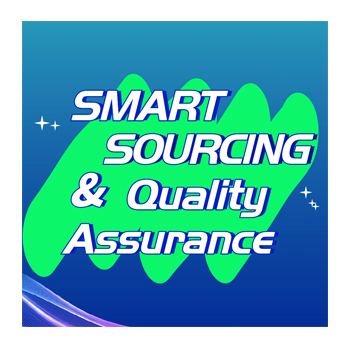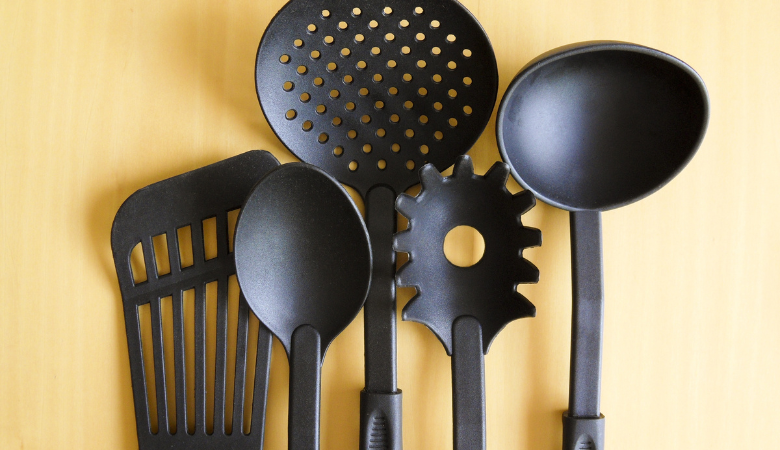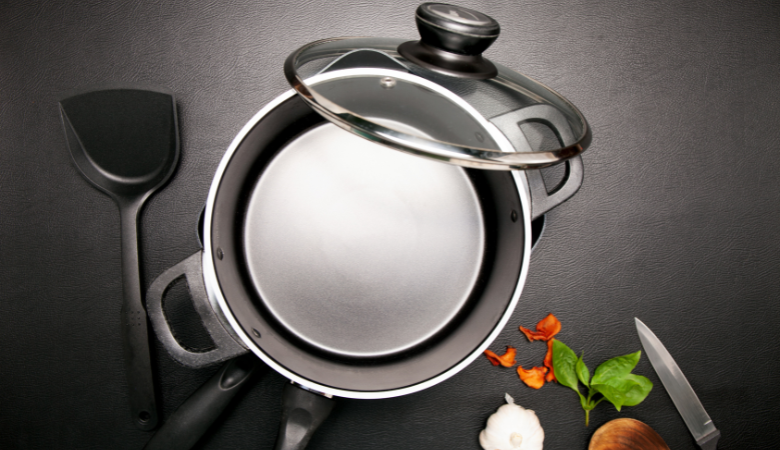
Accessories quality inspection plays a crucial role in ensuring product standards meet expectations. A well-structured quality control checklist helps teams prevent defective products from reaching customers. Through systematic inspection, professionals identify quality concerns early and address them before shipment. By using a checklist, teams maintain consistency and accuracy in each inspection. Quality control checklist adoption supports compliance and reduces risks related to quality issues. Effective accessories quality inspection leads to higher customer satisfaction and stronger business reputation.

Key Takeaways
• Accessories quality inspection helps catch defects early and ensures products meet customer expectations and safety standards.
• The inspection process includes four key stages: pre-production, in-process, pre-shipment, and container loading, each focusing on different quality aspects.
• Using a clear quality control checklist keeps inspections consistent, reduces errors, and guides teams through all necessary checks.
• Classifying defects as critical, major, or minor helps prioritize fixes and maintain high product quality.
• Regularly updating inspection checklists and working closely with suppliers supports continuous improvement and stronger product quality.
Accessories Quality Inspection
Definition and Importance
Accessories quality inspection refers to a systematic process that evaluates accessories to ensure they meet defined product requirements and quality standards. This process plays a vital role in the overall quality management system. Teams use product inspection to verify that each accessory aligns with customer expectations and regulatory guidelines.
A robust accessories quality inspection process helps organizations prevent defects and maintain consistency across production batches. By identifying issues early, teams can reduce the risk of costly recalls and customer complaints. Product inspection also supports compliance with industry regulations and internal quality control policies.
Note: Consistent product inspection builds trust with customers and strengthens a company’s reputation for delivering high-quality accessories.
Accessories quality inspection ensures that every item meets the intended function, appearance, and durability. Teams check for defects such as scratches, color inconsistencies, or faulty components. They also confirm that packaging and labeling match product requirements. This attention to detail helps companies achieve high levels of customer satisfaction and reduces the likelihood of returns.
Key Inspection Stages
The accessories quality inspection process includes several critical stages. Each stage focuses on different aspects of product quality and helps teams catch potential issues before products reach the market.
1. Pre-Production Inspection
Teams review raw materials and components before manufacturing begins. This stage ensures that suppliers provide materials that meet product requirements and quality standards. Early detection of issues at this stage prevents defects from entering the production line.
2. In-Process Inspection
Inspectors monitor production as it happens. They check for consistency, workmanship, and adherence to specifications. This stage allows teams to address problems immediately, minimizing the risk of widespread defects.
3. Pre-Shipment Inspection
Before shipping, teams conduct a thorough product inspection of finished accessories. They verify that products meet all quality standards, product requirements, and packaging guidelines. This step ensures that only compliant items leave the facility.
4. Container Loading Inspection
Inspectors oversee the loading process to confirm that products are handled correctly and packed according to requirements. Proper loading prevents damage during transit and maintains product quality until delivery.
| Inspection Stage | Focus Area | Key Activities |
|---|---|---|
| Pre-Production | Materials & Components | Material verification, supplier review |
| In-Process | Workmanship & Consistency | On-line checks, process monitoring |
| Pre-Shipment | Finished Product Quality | Final checks, packaging, documentation |
| Container Loading | Handling & Packaging Integrity | Loading supervision, damage prevention |
Each stage of product inspection contributes to a comprehensive quality control approach. By following these stages, organizations can systematically identify and address defects, ensuring that every accessory meets the highest quality standards.
Product Inspection Types
Pre-Production
Pre-production inspection serves as the first step in the product inspection process. Teams examine raw materials and components before manufacturing begins. They verify that suppliers deliver materials that meet quality standards. This stage helps prevent defects from entering the production line. Inspectors use a product inspection checklist to confirm that specifications match requirements. They also check for potential issues such as contamination or incorrect labeling. Early detection at this stage reduces the risk of costly errors later.
In-Process
In-process inspection, also known as in-production inspection, takes place during manufacturing. Inspectors monitor assembly lines and review workmanship. They ensure that each accessory meets design specifications. Teams identify problems such as misalignment or incomplete assembly. Regular product inspection during production allows for immediate corrective action. This approach maintains consistency and reduces the chance of widespread defects. In-production inspection supports continuous improvement by providing real-time feedback.
Pre-Shipment
Pre-shipment inspection occurs after production finishes but before products leave the facility. Inspectors conduct a thorough product inspection of finished accessories. They check for defects, verify packaging, and confirm that labeling matches requirements. This stage ensures that only compliant products reach customers. Pre-shipment inspection also includes reviewing documentation and test reports. Teams use this step to catch any remaining issues and maintain high quality standards.
Container Loading
Container loading inspection focuses on the final stage of the product inspection process. Inspectors supervise the loading of accessories into shipping containers. They confirm that products are handled carefully and packed according to guidelines. Proper inspection at this stage prevents damage during transit. Teams check for correct quantities and ensure that packaging protects the products. Container loading inspection helps maintain product integrity until delivery.
Tip: Consistent product inspection at every stage reduces the risk of defects and supports customer satisfaction.
Inspection Process
Preparation Steps
Effective inspection begins with thorough preparation. Teams review product specifications, quality standards, and previous inspection reports. They gather necessary tools such as calipers, measuring tapes, and defect reference samples. Inspectors receive clear instructions about the inspection scope and criteria. Preparation ensures that every team member understands the objectives and can identify potential issues quickly.
Tip: Preparation reduces errors and helps teams streamline quality inspections from the start.
Sampling Methods
Sampling plays a critical role in product inspection. Inspectors rarely check every single accessory in a batch. Instead, they select a representative sample using methods like random sampling or Acceptable Quality Limit (AQL) standards. This approach saves time and resources while maintaining accuracy. Teams document the sampling plan and ensure that the selected items reflect the overall batch quality.
| Sampling Method | Description | When to Use |
|---|---|---|
| Random Sampling | Selects items at random | General inspections |
| AQL Sampling | Uses statistical limits for acceptance | Large production lots |
| 100% Inspection | Checks every item | High-value products |
Visual and Functional Checks
During product inspection, inspectors perform both visual and functional checks. Visual checks focus on appearance, color consistency, and surface defects. Inspectors look for scratches, stains, or incorrect labeling. Functional checks test the accessory’s performance, durability, and safety. For example, a zipper must open and close smoothly, while an electronic accessory must power on and operate as intended. These checks ensure that each accessory meets customer expectations.
Documentation
Accurate documentation supports every inspection process. Inspectors record findings, note defects, and capture photos of issues. They complete inspection checklists and submit detailed reports to management. Proper documentation provides traceability and supports corrective actions. Teams use these records to improve future product inspection procedures and maintain compliance with quality standards.
Quality Control Checklist
A quality control checklist serves as a foundational tool in accessories inspection. This document outlines the inspection criteria, product requirements, and steps necessary to evaluate each accessory. Teams rely on a quality control checklist to maintain consistency, reduce errors, and ensure that every product meets established standards. The checklist guides inspectors through each stage of the process, from initial review to final approval.
Essential Elements
An effective quality control checklist contains several core components. These elements help inspectors verify that accessories meet all product requirements and quality expectations.
• Clear Product Requirements
The checklist must specify clear product requirements for each accessory. These requirements include dimensions, materials, color, weight, and functional features. Inspectors use these details as benchmarks during inspection.
• Packaging and Labeling
The checklist should outline packaging standards. Inspectors confirm that packaging protects the product and matches labeling guidelines. Proper packaging prevents damage and ensures compliance with shipping regulations.
• On-Site Product Inspection and Tests
The checklist includes on-site product inspection steps and functional tests. Inspectors check for defects, durability, and performance. For example, they may test zippers, clasps, or electronic functions to ensure reliability.
• Defect Classification
The checklist categorizes defects by severity. Teams classify issues as critical, major, or minor. This system helps prioritize corrective actions and supports decision-making about product acceptance.
• Collaboration and Communication
The checklist encourages collaboration among inspectors, supervisors, and suppliers. Teams use the checklist to share findings, discuss solutions, and document corrective actions.
Tip: A comprehensive quality control checklist reduces the risk of overlooking important inspection criteria and supports continuous improvement.
| Essential Element | Purpose | Example Activities |
|---|---|---|
| Product Requirements | Define inspection benchmarks | Measure size, check material |
| Packaging & Labeling | Ensure protection and compliance | Inspect box, verify labels |
| On-Site Tests | Confirm function and durability | Test zippers, check electronics |
| Defect Classification | Prioritize and address issues | Mark as critical, major, or minor |
| Collaboration | Improve communication and corrective action | Share reports, discuss solutions |
Organizing Inspection Flow
A well-organized inspection flow ensures that teams follow a logical sequence during the quality control process. The quality control checklist provides a step-by-step guide, helping inspectors move efficiently from one task to the next.
1. Preparation and Review
Inspectors begin by reviewing the checklist and gathering necessary tools. They study product requirements and previous inspection reports to understand the inspection criteria.
2. Sampling and Selection
Teams select samples based on the checklist instructions. They use methods such as random sampling or AQL to ensure representative results.
3. Visual and Functional Checks
Inspectors follow the checklist to perform visual inspections and functional tests. They compare each item against the product requirements and note any defects.
4. Packaging and Labeling Verification
The checklist guides inspectors through packaging checks. They confirm that packaging meets quality standards and that labels are accurate.
5. Defect Documentation and Classification
Inspectors record findings on the checklist. They classify defects according to severity and document supporting evidence, such as photos or measurements.
6. Collaboration and Reporting
Teams use the checklist to communicate results. They share inspection data with supervisors and suppliers, ensuring that everyone understands the outcomes and next steps.
Consistent use of an effective quality control checklist streamlines the inspection process and supports high-quality outcomes.
A quality control checklist not only standardizes the inspection process but also ensures that teams address every aspect of product quality. By organizing the inspection flow, companies can identify issues early, reduce the risk of defects, and deliver accessories that meet customer expectations.
Checklist Examples
Sample Template
A well-structured quality control checklist streamlines the accessories inspection process. Teams use a template to ensure consistency and thoroughness. Below is a sample template that covers essential inspection points for most accessories:
| Section | Inspection Criteria | Pass/Fail | Comments |
|---|---|---|---|
| Product Specifications | Dimensions, materials, color, weight | ||
| Workmanship | Surface finish, stitching, assembly | ||
| Functional Tests | Performance, durability, usability | ||
| Packaging & Labeling | Protection, correct labeling, barcodes | ||
| Defect Classification | Critical, major, minor issues | ||
| Documentation | Photos, notes, corrective actions |
Teams should adapt this template to fit specific product requirements and inspection needs.
Fashion Accessories Example
Fashion accessories require attention to detail during inspection. A quality control checklist for items like handbags or belts might include:
• Check material quality for scratches, stains, or discoloration.
• Inspect stitching for uniformity and strength.
• Test zippers, clasps, and buckles for smooth operation.
• Verify size, color, and design match approved samples.
• Confirm packaging protects the accessory and includes correct labels.
A clear checklist helps inspectors identify defects early and maintain high standards for appearance and function.
Electronic Accessories Example
Electronic accessories demand both visual and functional checks. A quality control checklist for items such as phone chargers or headphones should include:
• Examine casing for cracks, dents, or loose parts.
• Test all functions, such as charging or audio output.
• Check cable connections for secure attachment.
• Verify compliance with safety standards and certifications.
• Inspect packaging for protective inserts and accurate labeling.
Using a detailed checklist ensures that electronic accessories meet performance and safety expectations.
Quality Defects
Common Defects in Accessories
Accessories often face a range of quality defects during production and inspection. Teams must remain vigilant to spot these issues early. Common defects include scratches, discoloration, loose threads, and broken components. Inspectors may also find misaligned parts or missing pieces. These quality defects can affect both the appearance and function of the accessory.
Surface imperfections, such as dents or stains, frequently appear in metal or leather accessories. For electronic accessories, teams often encounter faulty wiring or poor connectivity. Packaging defects, like incorrect labeling or damaged boxes, also impact overall quality. By identifying these quality defects, inspectors help prevent quality issues from reaching customers.
Teams that consistently monitor for quality defects reduce the risk of customer complaints and returns.
Defect Classification
Effective quality inspection relies on a clear system for classifying defects. Teams use this system to prioritize corrective actions and maintain high quality standards. Defects typically fall into three categories:
1. Critical Defects
These defects pose safety risks or cause the accessory to fail completely. For example, exposed wires in electronic accessories represent a critical defect. Teams must address these quality defects immediately to avoid serious quality issues.
2. Major Defects
Major defects impact the accessory’s function or appearance but do not create safety hazards. Examples include broken clasps or significant color mismatches. These quality defects often lead to customer dissatisfaction and returns.
3. Minor Defects
Minor defects do not affect the accessory’s use or safety. Small scratches or slight misprints on packaging fall into this category. While minor, these quality defects still require attention to uphold quality.
A structured approach helps teams identify nonconformances and address all types of defects. By classifying quality defects, inspectors ensure that quality issues receive the right level of response.
| Defect Type | Description | Example |
|---|---|---|
| Critical | Safety risk or total failure | Exposed wires, missing parts |
| Major | Affects function or appearance | Broken clasp, color mismatch |
| Minor | No impact on use or safety | Small scratch, label misprint |
Best Practices
Supplier Verification
Supplier verification stands as a critical step in maintaining high quality standards for accessories. Teams must confirm that suppliers meet all regulatory and product requirements before production begins. They review supplier certifications, audit manufacturing processes, and assess previous performance records. Reliable suppliers help reduce the risk of defects and ensure consistent quality. Teams often use a quality control checklist during supplier evaluations to document findings and support decision-making.
Physical and Functional Tests
Physical and functional tests form the backbone of any effective quality control checklist. Inspectors examine each accessory for visible defects, such as scratches or loose parts. They also test the product’s function, making sure it performs as intended. For example, a clasp should open and close smoothly, while an electronic accessory must operate safely. Teams record all results and note any issues for further review. These tests help identify problems early and prevent faulty products from reaching customers.
Tip: Consistent documentation of test results supports traceability and future improvement.
Continuous Improvement
Continuous improvement drives long-term success in quality control. Teams analyze inspection data to spot trends and recurring issues. They hold regular meetings to discuss findings and develop action plans. Collaboration between inspectors, supervisors, and suppliers leads to better solutions and higher quality standards. By updating procedures and refining the effective quality control checklist, organizations adapt to new challenges and maintain a strong focus on quality. Continuous improvement ensures that every inspection process evolves and delivers better results over time.
Thorough accessories quality inspection ensures products meet high standards and customer expectations. A well-structured quality control checklist supports teams in identifying defects and maintaining consistent quality. By applying the checklist examples and best practices, professionals can strengthen inspection processes. Teams should review and update their current quality control checklist regularly. Involving key stakeholders in these updates helps drive continuous improvement and better quality outcomes.
FAQ
What is the main purpose of an accessories quality inspection?
The main purpose of an accessories quality inspection is to verify that products meet defined standards for appearance, function, and safety. This process helps teams identify defects early and ensures only compliant items reach customers.
How often should teams update their quality control checklist?
Teams should review and update their quality control checklist regularly. They can do this after each inspection cycle or when product requirements change. Frequent updates help maintain accuracy and address new quality challenges.
Which sampling method works best for large accessory batches?
For large batches, teams often use Acceptable Quality Limit (AQL) sampling. This statistical method allows inspectors to select a representative sample. AQL helps balance inspection efficiency with reliable quality results.
Why is defect classification important in inspections?
Defect classification helps teams prioritize corrective actions. By sorting defects into critical, major, or minor categories, inspectors can address the most serious issues first. This system supports consistent decision-making and quality improvement.
What should inspectors document during an accessories inspection?
Inspectors should document all findings, including defects, measurements, and test results. They should also include photos and notes about corrective actions. Proper documentation supports traceability and future process improvements.

Smart Sourcing & Quality Assurance Content Team
Article by Smart Sourcing & Quality Assurance Content Team
The Smart Sourcing & Quality Assurance Content Team is dedicated to delivering high-quality, easy-to-understand information that empowers our audience to navigate the complexities of global sourcing and quality assurance. Our team of writers has extensive experience in creating content across various fields, including procurement, supply chain management, quality assurance, market trends, and industry best practices. We specialize in sectors such as apparel, textiles, and consumer goods, providing targeted insights to help businesses in these industries optimize their sourcing strategies, ensure product quality, and maintain a competitive edge in the market.


